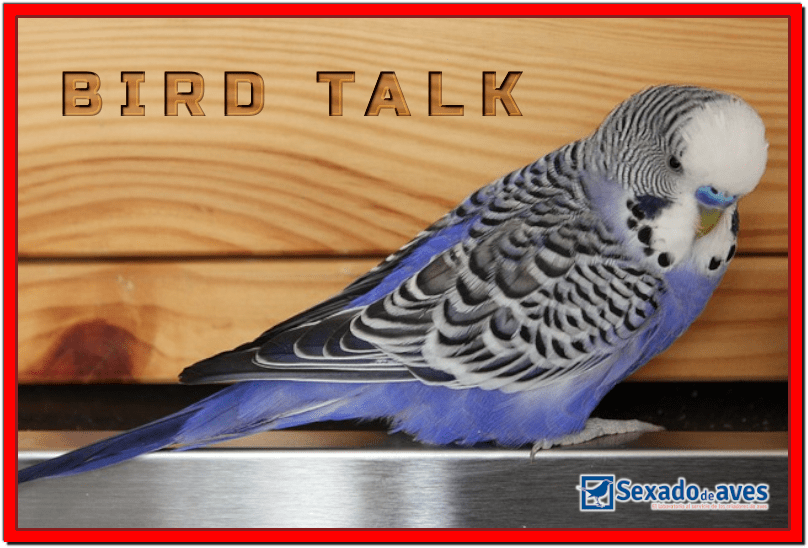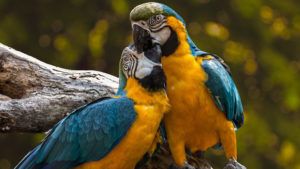Bird Talk
Many birds such as parrots, corvids, cockatoos and mynas are known to possess the ability to copy human speech (audible mimicry). However, this ability varies greatly between species. Members of the crow family have been

Many birds such as parrots, corvids, cockatoos and mynas are known to possess the ability to copy human speech (audible mimicry). However, this ability varies greatly between species. Members of the crow family have been known to mimic a few words whilst some bugerigars have been documented to have extensive vocabularies consisting of hundreds. The truth is talking birds are fascinating and have entertained and amused humans for millennia. In the following paragraphs some information and guidance is given for anyone who has a bird which is a potential talker and wishes to teach it some words.
Prominent talking birds
The earliest reference to a talking bird was in the 5th century B.C. by the Greek physician and historian Ctesias. The bird which he mentioned is believed to have been a plum-headed parakeet. Its name was Bittacus.
In more modern times talking birds have appeared in many films and works of literature, the most famous possibly being Long John Silver´s parrot in Treasure Island, written by the esteemed Robert Louis Stevenson.
Probably the most famous talking bird was Alex, an African grey parrot (Psittacus erithacus) who sadly passed away in 2007. Alex (an acronym of Animal Learning Experiment) was the principal subject of a 30 year study into avian cognition that was conducted by the biologist Irene Pepperberg. He possessed an extensive vocabulary which he was reported to have used in a sophisticated manner and was assessed by Pepperberg to have had a language abillity similar to that of a two year old child. He knew the colours, shapes and qualites of objects, the material from which they were made, and could count up to six.
How birds make sounds
Birds unlike humans have no larynx. Instead they produce sounds by modifying air flow over an apparatus unique to birds called a syrinx.
Birds love socializing
In the wild birds live in a social context and are used to a lot of social interaction. Therefore the more time you spend speaking and interacting with your bird the better as this will ensure that your companion is happy and will make the bond between the two of you stronger.

Important point
Take note, on aquirering a feathered friend, if its sex is not known it is advised to have your pet sexed so that you bestow it with a name corresponding to its genre, after all the two of you are going to have a long and close relationship. This service costs very little and is available at www.sexadodeaves.com.
How birds learn sounds
Wild birds like young children are vocal learners. They learn sounds through mimicing their parents and other members of their social group. Therefore, in order to start your bird talking you should speak to your bird repeating the word that you want it to learn. Repeat the same word many times as the more times your pet hears a word repeated the more likely it is to mimic it.

When training your pet it is best to hold it in front of your mouth so that you have its full attention. This will also focus it on the sounds that you want it to make. Begin with simple words such as hello or your pets name and then incorporate other words or phrases that it is likely to hear often from you or your friends. Furthermore, be aware that the vocalization of tones and word parts are the first step in word learning. Therefore, encourage your bird when it makes sounds that approximate speech.
Give praise
When your bird repeats a word, praise it as this will please it. On occasions, you can also reward it with a treat. This provides your bird with an added incentive and will encourage it to participate in the language learning game that the two of you are playing. Try to avoid rewarding your bird when it isn´t speaking as this will make it more eager to perform.
Training sessions
To maximize your birds learning potential it is best to give five minute training sessions two to five times a day. Short frequent sessions are much better than long infrequent ones. With longer sessions, birds may get bored and feel strained. In order to feel more organized, you may wish to consider scheduling your training sessions into your daily timetable.
Supplementary material
As mentioned above, the best way to teach your pet is to talk to and interact with it directly as birds love social interaction. However, if time is an issue an alternative is to use recorded material as a supplement. Recordings can be prepared and played to your student when you are occupied with other things. A timer can also be utilized to target the listening activity to a time of the day when your pet is at its most receptive.
Patience
It´s important to remember that like humans all birds are unique and will vary in their language acquisition ability. Some birds may learn to say many words whilst others may only learn one or two or perhaps none at all. Therefore, try not to get impatient and frustrated. Never shout at your pet as this will frighten it. If your pet doesn´t learn as quickly as you would like it to you will still be great friends. Remember that your pet is not human and won´t fully understand your intentions.
The words that you teach your feathered friend should be considered carefully as a word spoken in the wrong situation may cause problems. Once your bird starts talking it will copy words that it hears spoken in its locality. Therefore, care should also be taken when not directly speaking to your pet.
Modal/rival technique
Another teaching method for the more seriously inclined is the Model/rival technique. This is the technique that was used by Irene Pepperberg to teach her parrot Alex. In this technique, there are two trainers. One gives instructions while the other models correct and incorrect responses and acts as the student´s rival for the trainers attention. The trainers also exchange roles indicating that the game is interactive. This Technique can be utilized using a friend or relative.
Have fun
When teaching your bird to speak the most important thing is to enjoy the process. Birds are like children, they love to play and they learn when having fun. Good luck and enjoy!
